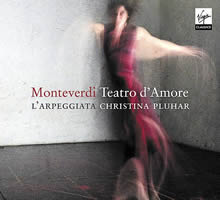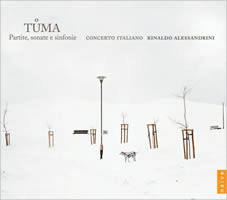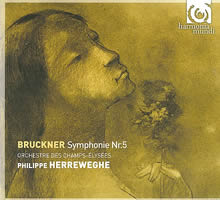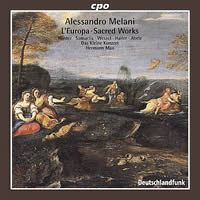Six Curious Pair Bonds
|
Dan Albertson [Gratitude to Brian Mathie and Spencer Means for ever-new CD ideas, and to Mickey Weisberg, Esq. for his sage yet decidedly unmusical advice. D.A.]
“Teatro d’Amore.” Claudio MONTEVERDI: Toccata; Ohimè ch ’io cado; Pur ti miro; Damigella tutta bella; Amor [Lamento della Ninfa]; Sì dolce è ’l tormento; Sinfonie & Moresca; Interrotte speranze; Chiome d’oro; Oblivion soave; Hor che ’l ciel e la terra; Tempro la cetra; Ballo; Con che soavità; Vago augelletto; Zefiro torna. Nuria Rial (sop), Philippe Jaroussky (ctrten), Cyril Auvity, Jan van Elsacker (ten), João Fernandes (bar) (miscredited as “Joaõ Fernandes” throughout the documentation), madrigalisti (Michaela Reiner, Lauren Armishaw, Zsuzsanna Toth [sop], Nicolas Achten [bs]), L’Arpeggiata, Christina Pluhar (dir.). Virgin Classics VC 5099923614024 (http://www.emiclassics.com/). Christina Pluhar makes her Virgin début with this offering — arrangements of some of Monteverdi’s “greatest hits,” alongside lesser-known but no less endearing pieces, largely from the middle or late madrigal books. Her aim is, in her own word, “varietà” and she has achieved that with only a few stumbles. Accompanying her troupe is an array of accomplished singers from younger generations, including the starriest countertenor to emerge since Andreas Scholl. L’Arpeggiata numbers two dozen, an extraordinary number when one considers that, Renaissance brass excluded, the bulk of the lineup is continuo. As expected the sound is bright, yet never seems excessive or as lavish as I would have imagined; Gabriel Garrido or René Jacobs, in their fine Monteverdi discs, engender a comparable palette with far fewer musicians. The disc flows very well and the range keeps the ears engaged, the forces involved changing from piece to piece. The four madrigalisti, for instance, appear in part on only three pieces. Rial and Jaroussky bring a direct approach to the famous duet Pur ti miro from the end of Poppea, in all likelihood penned by Benedetto Ferrari, safely keeping it far from sentimentality. This performance is a recovery from what precedes, a jazzy rendition of Ohimè ch ’io cado, which takes the walking-bass idea too far. Pluhar describes this version as a “scherzo musicale,” but the joke is lost on me. A more successful recasting, again exploiting the jazz and Baroque bass linkage, is Chiome d’oro, played with true élan and somewhat more “straight.” Two other, more unlikely duets are Interrotte speranze and Tempro la cetra, both from the Settimo libro and both featuring Auvity and van Elsacker. I know Auvity as a countertenor, but he is billed here as a (high) tenor. Every singer is consistently superb. Were I to complain, I would bemoan the fact that the CD mentions four different recording dates. Why? Is the level of musicianship hit-and-miss, requiring a collation of concerts? I would think not. Captions for the varied Marco Borggreve portraits would have been nice as well: Some identities are obvious, such as Jaroussky and Pluhar, but others leave a reader questioning who is in the photograph.
František Ignác Antonín TŮMA: Sonata a 4 in la minore; Partita a 4 in re minore; Sinfonia a 4 in si bemolle maggiore; Sinfonia a 3 in si bemolle maggiore; Partita a 3 in do minore; Sonata a 4 in mi minore; Sonata a 3 in la minore. Concerto Italiano, Rinaldo Alessandrini (hpsd, dir.). Naïve OP 30436 (http://www.naive.fr/). Distributed in the US by Naxos (http://www.naxos.com/). Tůma (1704-74) is sure to be an unknown figure to most listeners. Though what would today be considered a Czech, he spent his mature life in Vienna, where he was active as a composer and soloist on theorbo and viola da gamba, both moribund instruments at the time. Like Alessandrini, I am uncertain about the greatness of Tůma. This recording serves as a fine introduction to his various partite and sonate. Though none shows a particularly individual voice, each evinces undeniable charm. The assembled incarnation of Concerto Italiano is quite modest, only a string quartet with double bass, theorbo and harpsichord; the recorded sound is superb, a Roman acoustic allowing ample clarity and extended fades to each movement as the period instruments stop resonating. The five-movement Partita a 3 in do minore is the longest of the set and also its greatest joy, with a delightful, rollicking Allegro to close. Alessandrini compares the pensive Adagio opening of the four-movement Sinfonia a 3 in si bemolle maggiore to Handel and I hear that influence as well, but for pure passion and beauty of expression, I prefer the almost funereal Largo of the four-movement Sinfonia a 4 in si bemolle maggiore. The Sonata a 3 in la minore could almost be an opera overture, cast in three distinct movements, while the two-movement Sonata a 4 in la minore offers a superb, immediate contrast. For the latter, Alessandrini has designated the second half as an Allegro ma piano and his group poignantly captures a mood of simultaneous playfulness and quietude. Curious listeners will find much to entertain here. The performances seem committed, if understandably less fiery than one expects from Alessandrini and friends.
George Frideric HANDEL: Ciel e terra armi di sdegno* (Tamerlano); Fatto inferno è il mio petto – Pastorello d’un povero armento (Rodelinda); Frondi tenere e belle* – Ombra mai fu* – Più che penso alle fiamme del core – Crude furie degl’orridi abissi (Serse); Scherza, infida, in grembo al drudo!* – Dopo notte atra a funesta (Ariodante); Oh, per me lieto, avventuroso giorno!** – Figlia mia, non pianger – Tu, spietato, il vedrai (Tamerlano); Così la tortorella – Caro figlio! (La Resurrezione) (* = also on DVD). Rebecca Bottone (sop)**, Jean Gadoullet (ctrten)**, Rolando Villazón (ten), Gabrieli Players, Paul McCreesh (dir.). Deutsche Grammophon 477 8057 (http://www.deutschegrammophon.com/). The present disc poses quite a dilemma for anyone, like me, who has come to accept fully the innovations of Baroque-performance praxis over the past three or four decades. Of course, the faux-Baroque singing of a true hero from the world of bel canto could not have any claim to “authenticity.” However, Handel, if confronted with “Il Messicano,” as one could dub Villazón in fond remembrance of Francesco Bernardi (“Senesino”), would surely have exploited his gifts to the full, have had no qualms about his technique or his enormous voice and have proffered no objections to his “theft” of arias meant for other vocal types. Perhaps modern listeners should be equally open-minded, or perhaps not: Have we as listeners become too dogmatic, or was Handel as a composer too willing to compromise? From a purely musical perspective, Villazón seldom disappoints. A problem is his monotony: He is big-voiced and big-voiced almost all the time, but any recital disc could register this woe. The extensive alto aria Scherza, infida, in grembo al drudo! is finely colored and held together remarkably well despite its swift pace. The bellicose aria Ciel e terra armi di sdegno seems not far removed from the swagger of 19th-century opera that Villazón knows so well, while the overexposed Ombra mai fu is dispatched quickly, neither tarnishing it nor savoring it. The best performance may well be Tu, spietato, il vedrai, the death of Bajazet given a vivid, almost visceral interpretation by Il Messicano, but I am unable to discern any reason for not ending the disc here. Is death not the best place to end, or is the pair of arias from La Resurrezione that follows meant to give Villazón a Christ-like ability of reincarnation? If my cynicism seems high here, one needs only to look through the booklet or tour the DVD, with “Photo Gallery” as one of its options, to understand why; one will quickly have the impression that iconography is very important to the Villazón mystique. One wonders whether he, as a male Anne-Sophie Mutter, is distracted by all this voyeurism or is a willing participant. Musicians are allowed to be beautiful, bien sûr, but music itself must remain paramount. I feel sorry for Paul McCreesh and his musicians here, because they are excellent and yet they are completely secondary: Against Villazón who could stand a chance? One never doubts whose show one is hearing. My pity extends to Jean Gadoullet, who as Tamerlano has one line to declaim in Oh, per me lieto, avventuroso giorno!, the same aria in which Rebecca Bottone as Asteria is given a few additional seconds. No one will care about these two, however: Villazón’s voice overwhelms all else. The three-aria DVD by Henning Kasten is mercifully simple: The performances are allowed to speak for themselves. One finds Villazón in front of the Gabrielis in St Paul’s Church and before an engaged audience. The DVD arie were recorded some six months after the studio sessions on CD, but offer no glaring differences in interpretation. The noted Handel and Mozart singer Rosemary Joshua recently told BBC 3 that, while the singing is “very interesting” and “very beautiful,” “there’s nothing authentic in it at all.” I concur, but I admit that at times I seemed almost not to care. I am not likely to return to this disc often, if ever, but I was not as dismayed as I feared.
Johann Sebastian BACH: Aus der Tieffen ruffe ich Herr zu dir, BWV 131; Himmelskönig sei willkommen, BWV 182; Christ lag in Todesbanden, BWV 4. Katharine Fuge (sop), Carlos Mena (ctrten), Hans Jörg Mammel (ten), Stephan MacLeod (bs), Ricercar Consort, Philippe Pierlot (vdg, dir.). Mirare MIR 057 (http://www.mirare.fr/). Distributed in the US by Harmonia Mundi (http://www.harmoniamundi.com/). Bach cantatas are almost ubiquitous now. Despite this fact, from time to time a recording emerges that reminds one of the freshness and wonder inherent in the music. This disc, featuring the talents of only the four brilliant soloists and the accompanying Ricercar Consort, is a revelation. Seldom have I heard such immediacy and transparency from singers or musicians. I have intentionally avoided pulling out any comparison cantata recordings from my vault. This disc should stand on its own and become an essential addition to any Baroque library. Hear the magic for yourself!
Anton BRUCKNER: Symphonie Nr. 5 in B-dur. Orchestre des Champs-Élysées, Philippe Herreweghe (cond.). harmonia mundi HMC 902011 (http://www.harmoniamundi.com/). As I have noted before, Herreweghe’s Bruckner is a truly significant achievement and this symphony, the latest in what I hope will be a complete cycle, is ample proof. The recorded sound, from the famed Arsenal in Metz, is pure and warm, never compressing the gargantuan dynamic range. The tempi, so crucial to Bruckner, are moderate, or perhaps fast when compared to some recent accounts. I view some of the slowest performances as more a temple to the self-indulgence of their conductors than to the majesty of the composer. Herreweghe is too sensitive not to understand the variety needed by Bruckner and he responds with a tact and care that is to be expected, always moving the music forward, never rushing or becoming sentimental. As with the Bach above, I have been derelict in my duty to compare, preferring instead to appreciate this sumptuous world for its own sake. I have noted, however, a similarity to a recording that is perhaps my favorite “ahistorical” rendering, at least in durations: Jascha Horenstein’s live account from London on Music & Arts (O/P): Bruckner: Symphony No. 5
One sees that Herreweghe responds even more dutifully to sehr langsam in the Adagio than Horenstein, yet his disc omits this direction from its documentation. Issues of tempo are less important in Bruckner than proportionality, i.e., how one movement relates to any other and how relative motifs within the same movement appear to each other. Herreweghe is triumphant in these senses, his expert pacing allowing the music to speak with a rare ease and uniformity. As a postlude, I heard a broadcast of Herreweghe conducting Bruckner’s Eighth last summer. I suspect that this live performance, or one prior or subsequent to it, will appear on harmonia mundi soon. If yes, the world will soon hear another marvel.
Alessandro MELANI: L’Europa; Requiem; Beatus vir; Magnificat. Veronika Winter, Cornelia Samuelis (sop), Kai Wessel (ctrten), Benoît Haller (ten), Ekkehard Abele (bs), Das Kleine Konzert, Hermann Max (dir.). cpo 777 408-2 (http://www.cpo.de/). Distributed in the US by Naxos (http://www.naxos.com/). Melani (1639-1703) seems to be a departure from the Monteverdi-Cavalli line into which he was born, despite some occasional dramatic leanings of his own. His music is slightly more austere, less ostentatious and more explicitly pious than that of his predecessors. The reliable Hermann Max, who must possess the mightiest head of hair in all of early music (is Sir Roger Norrington envious?), and his soloists and musicians are all in fine, pellucid form. An introduzione, L’Europa, is complemented by three sacred settings. To my ears, the dramatic piece seemed somewhat inhibited, despite many arresting passages. The truer Melani is to be found in the Latin treatments, which are reverential enough while also offering some surprises. I am not sure how the Requiem, given credit as a work for two soli and five ripieno voices, could be performed by only five singers, but the rich and at times potent music itself makes such a concern irrelevant.
[More Dan Albertson]
[Previous Article:
42 Amens]
[Next Article:
EA Bucket 9.]
|





